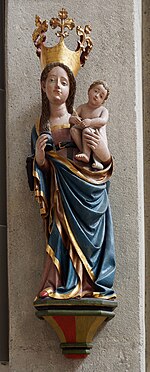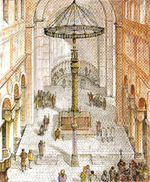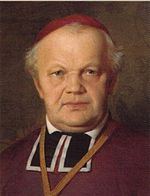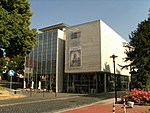Bernward Doors
1010s works11th-century sculpturesBronze doorsBronze sculptures in GermanyCultural depictions of Adam and Eve ... and 3 more
Hildesheim CathedralMedieval European metalwork objectsOttonian sculptures
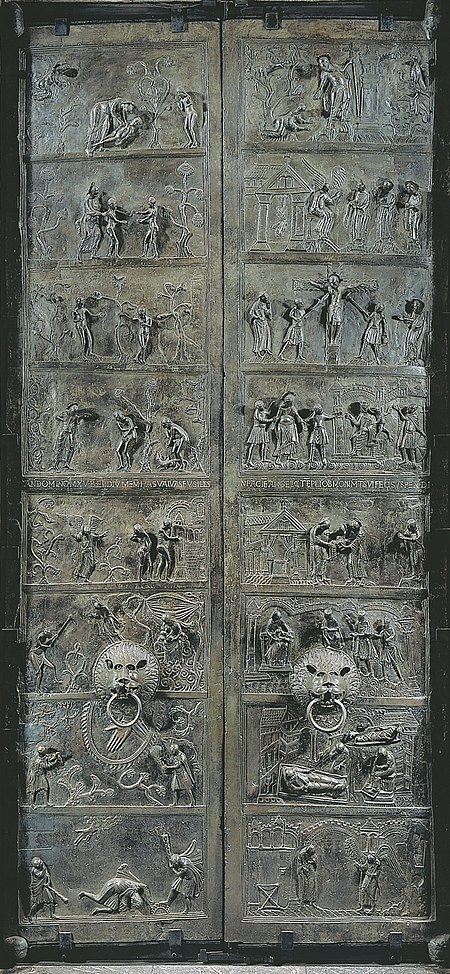
The Bernward Doors (German: Bernwardstür) are the two leaves of a pair of Ottonian or Romanesque bronze doors, made c. 1015 for Hildesheim Cathedral in Germany. They were commissioned by Bishop Bernward of Hildesheim (938–1022). The doors show relief images from the Bible, scenes from the Book of Genesis on the left door and from the life of Jesus on the right door. They are considered a masterpiece of Ottonian art, and feature the oldest known monumental image cycle in German sculpture, and also the oldest cycle of images cast in metal in Germany.
Excerpt from the Wikipedia article Bernward Doors (License: CC BY-SA 3.0, Authors, Images).Bernward Doors
Domhof, Hildesheim Altstadt (Stadtmitte/Neustadt)
Geographical coordinates (GPS) Address Website Nearby Places Show on map
Geographical coordinates (GPS)
| Latitude | Longitude |
|---|---|
| N 52.1489 ° | E 9.9464 ° |
Address
Hoher Dom St. Mariä Himmelfahrt
Domhof 17
31134 Hildesheim, Altstadt (Stadtmitte/Neustadt)
Lower Saxony, Germany
Open on Google Maps
